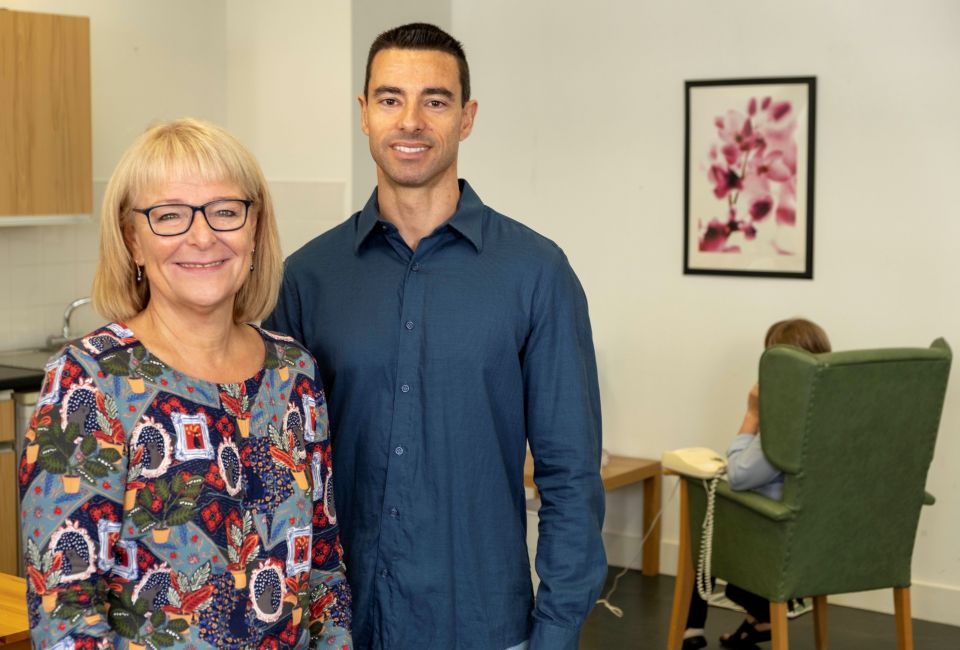
Research links sedentary lifestyles to urinary incontinence in older women
Researchers in the Ageing Well research group at Glasgow Caledonian University (GCU), working with the coordinator of the Methodology, Methods Models and Outcomes of Health and Social Science research group (M3O) at the University of Vic - Central University of Catalonia (UVic-UCC), Javier Jerez-Roig, have found the first direct link between sedentary lifestyles and urinary incontinence among older women, after analysing data from 459 women over 60 years old suffering from different types of incontinence.
The researchers recommend that women spend less time sitting and use simple techniques to solve bladder control problems instead of immediately using compresses, as they should only be used when treatment has failed and as a last resort. There are three major bladder control disorders among women; the first is stress incontinence, which is often related to childbirth and muscle weakness leading to leakage. The second is incontinence urgency, where people are unable to reach the toilet in time due to a bladder control problem, and the third is a mixture of both (the mixed type), which is most common among older women.
The women who participated in the study were part of a cohort of 5,500 people randomly selected by the National Health and Nutrition Examination Survey (NHANES) in the United States, who were given an accelerometer, a device for measuring physical activity, to wear 24 hours a day for five days. The author of the research paper, published in the journal PLOS ONE (The Public Library of Science ONE), Professor Joanne Booth, explains that: "We know that physical activity can help bladder problems but this is the first time we have looked at the link between sedentary behaviour and incontinence in a big cohort."
"Sit less - move around more"
The M30 coordinator, Javier Jerez-Roig, who spent six months at the GCU working with the Ageing Well researchers after being awarded the José Castillejo mobility grant for young researchers, funded by the Spanish Ministry of Education, Culture and Sports, emphasises that "sitting down less and moving around more" is essential, as well as "dividing time spent sitting into periods of less than 18 minutes." He also says that "we know that sitting down is bad for this group, but to date no evidence has been found that it could be associated with urine losses when these sedentary periods are prolonged. The specific type of incontinence that appears to be most closely related is urgency incontinence, so I advise women to spend less time sitting and to move around more."
The study shows that women with urinary incontinence spend 19% more time sitting than those who do not. "Now that we know that there is a direct link with urgency incontinence and sitting too long, we need to look for additional mechanisms for dealing with it. The solution is not going to be simply telling women to do pelvic floor muscle exercises but also that moving more and reducing time spent sitting may help them, particularly with urgency incontinence," says Professor Booth.
Solutions to the problem of incontinence
In the near future, GCU's Ageing Well team is considering developing new health technologies to provide women with more accurate information on how to maintain bladder control.
There are currently various options to relieve the problem of short-term incontinence, such as medication, diapers, etc. The researchers have found that "you get more urgency as you get older, and it may be that if you are not as sedentary that might improve. Certainly we know that sitting for a long time isn't going to help the situation." However, they warn that medication should be used only as a last resort after all other avenues (physiotherapy, behavioural measures, etc.) have been explored.
Furthermore, she has noticed that "more women are buying incontinence pads than ever before. Supermarket shelves are crammed with them. This never used to happen," said Booth. "All the advertising around incontinence pads and pants materials on our TV screens is normalising the wearing of them as a solution to incontinence. The messages that are being put out are that you can be sexy even if you're wearing a pad, but it's not normal to leak - it is common, but not normal."
Training is another basic method, as according to Professor Booth, "three-quarters of women can be helped or cured by very simple techniques like bladder training or pelvic floor muscle exercises, moving more and changing fluid intake."